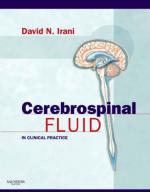|
This section contains 399 words (approx. 2 pages at 300 words per page) |
The entire surface of the central nervous system is bathed by a clear, colorless fluid called cerebrospinal fluid (CSF). The CSF is contained within a system of fluid-filled cavities called ventricles. It serves to both cushion the brain and spinal cord, and to bathe the central nervous system (CNS) in a dynamic, watery milieu. Its main function is to provide buoyancy and protection for the CNS. The total CSF volume in humans is approximately 140 ml. About 23 ml of this total is contained within the ventricular system and the remainder is distributed between the subarachnoid space surrounding the brain and spinal cord and the interstitial space surrounding the individual elements of the CNS. The lining of the ventricular system, known as the ependymal lining, is freely permeable to the CSF and also to large molecules. Thus the ventricles, subarachnoid space and interstitial space in the brain are anatomically continuous. However, the vascular compartment of the brain is separated from the CSF spaces by specialized capillary endothelium, which restricts the passage of molecules larger than 20 angstroms in diameter. This layer of ependyma forms the anatomical basis of the blood-brain barrier.
The average rate of CSF production in humans is approximately 0.3-0.4 ml/min. Thus the total CSF volume is renewed every 5-7 hours. About 70% of CSF is produced in the choroid plexus, and the remainder is formed from the metabolic activity of the brain and spinal chord parenchyma. Production of the CSF by the choroids plexus begins as blood is filtered through the fenestrations of the choroidal capillaries. This protein rich ultrafiltrate enters the choroid plexus stroma and moves by bulk flow into the clefts between the choroids epithelial cells. At this point, several processes determine which constituents of the ultrafiltrate enter the CSF. Sodium is moved into the ventricle in exchange for potassium via a sodium-potassium-adenosine triphospahte (Na+-K+-ATPase) pump, which operates within the epithelial cell. Chloride and bicarbonate ions move passively into the CSF as a result of carbonic anhydrase activity within the epithelial cell. Protein enters the ventricular system by two possible mechanisms: pinocytosis and through small pores. The osmotic gradient established by active sodium secretion appears to be responsible for the passive migration of water across the choroidal epithelium into the ventricles. Extrachoroidal production of CSF is also known and perhaps as much as 30% of CSF formation occurs within the CNS parenchyma.
|
This section contains 399 words (approx. 2 pages at 300 words per page) |


